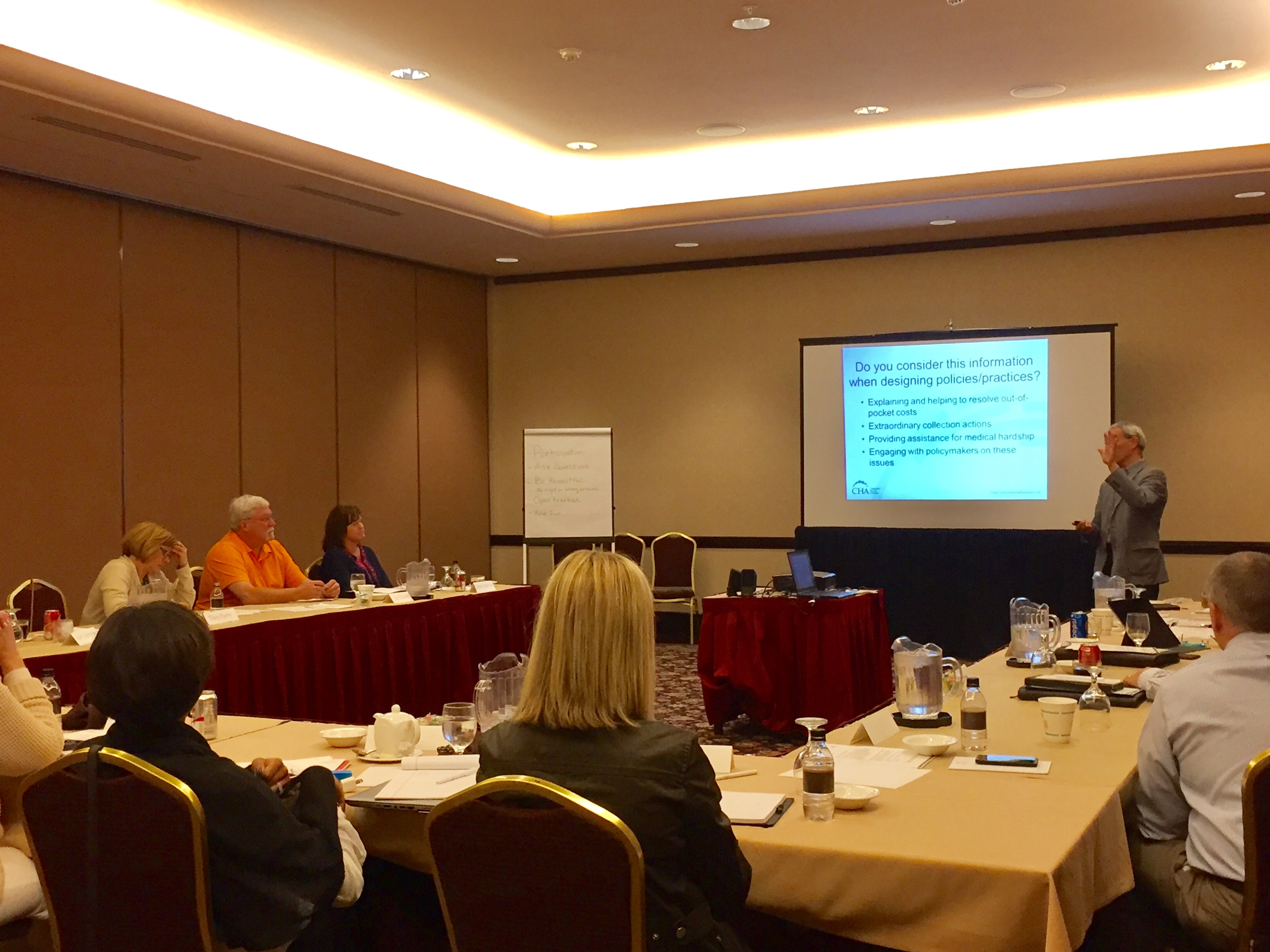At Avadyne Health’s 2017 Market Roundtable, Mark Rukavina, Principal, Community Health Advisors, LLC, walked attendees through an in-depth look into factors that both shape and reflect the current state of the Patient Financial Experience.
Rukavina’s consumer-oriented perspective on the patient financial experience dove deep into external influences on patients’ financial situations and motivations and focused on the topics of affordability, community and the patient perspective.
Understanding the Patient Perspective
Rukavina’s presentation put the economic environment in which patients are functioning into perspective. This included a look at national healthcare expenditures and a chart comparison between the growth rates of wage gains and various health costs.
He also painted a picture of the new norm of high deductibles, stressing the fact that they are not exclusive to HSAs. Rukavina added, “Bad debt is not only driven by uninsured patients. It’s also impacted by patients with insurance who have significant out-of-pocket obligations.” To open up discussion on this topic, attendees were invited to share what they were seeing in their home environments as both providers of healthcare services and employee benefits.
The discussion continued with a deep dive into what “affordability” looks like for American families. Rukavina covered statistics around medical debt, impact on way of life, medical bill problems and the Federal Reserve’s Survey results around emergency and major medical expenses.
He then shifted to look at the concept of patients as consumers, continuing to engage with attendees around their individual perspectives. The presentation rounded out with an empathetic look at the Human Experience by tying patient financial experiences to clinical outcomes, examining price transparency tools and taking the perspective of a patient navigating hospital websites (something attendees enjoyed.)
Key Takeaways
Rukavina’s presentation covered some of the most pressing concerns on the minds of healthcare stakeholders. Here are some of the most notable points:
- The current government administration will have significant impact on both patients and hospitals
- The combination of the old (human connection) and new (technology) can lead to a world of new opportunities
- The healthcare experience, from the patient perspective, appears largely randomized. Patient attitudes toward medical debt is a topic that facilities should strive to understand.
- The most important point being that understanding the patient financial experience requires a multi-faceted comprehension of environment, motivations and the patient perspective.
Reactions and Key Points of Interest
Attendees showed specific interest in these key topics:
- Patients as consumers and how they interact with insurance and healthcare
- Price transparency and where the industry falls short
- Avoiding pitfalls when navigating patient conversations
Patients as consumers and how they interact with insurance and healthcare
The question of addressing the patient as a consumer emerged when the discussion turned to designing policies and practices. The group conversation highlighted the disconnect between what patients understand when they purchase insurance and what that purchase turns out to be, both when they access care and receive bills following service.
It was agreed that when patients are making insurance purchases, most are not thinking about their healthcare services and instead make decisions based on what will best fit their budget at the time. The majority of participants in the discussion agreed that more patient education was needed in this area.
Price transparency and where the industry falls short
Bringing patients true price transparency emerged as a pain point that was well-understood across the board.
Rukavina presented an examination of the most common online searches performed on a price transparency tool (published in Health Affairs.) This generated conversation around transparency and the disconnect between the majority of existing insurance tools which tend to reflect demographic or regional pricing. It was also brought up that government-issued tools are based on chargemaster costs, not what the patient actually pays, a trait that doesn’t align with the definition of true transparency.
Avoiding pitfalls when navigating patient conversations
The topic of patient conversations was raised again, with attendees asking for recommendations on how to have the best possible interactions with their patients.
Rukavina recommended that the best place to start was staying compliant with federal regulations. He emphasized that the best defense for scrutiny is making sure that policies are being followed, and noted the importance of strong tools.
The presentation concluded with an emphasis on listening and outreach and their importance in understanding patients but also connecting with the communities in which they’re engaged.
Avadyne Health’s Market Roundtable brings together healthcare industry leaders to share in open discussions around the Patient Financial Experience through discussion with other revenue cycle C-suite peers from around the country.
The 2-day event focuses on emerging trends, sharing new thoughts and facilitating conversations around the Patient Financial Experience. Attendee collaboration builds insight into opportunities and barriers within the revenue cycle and uncovers new and impactful ways of improving the present and designing the future of the Patient Financial Experience.









